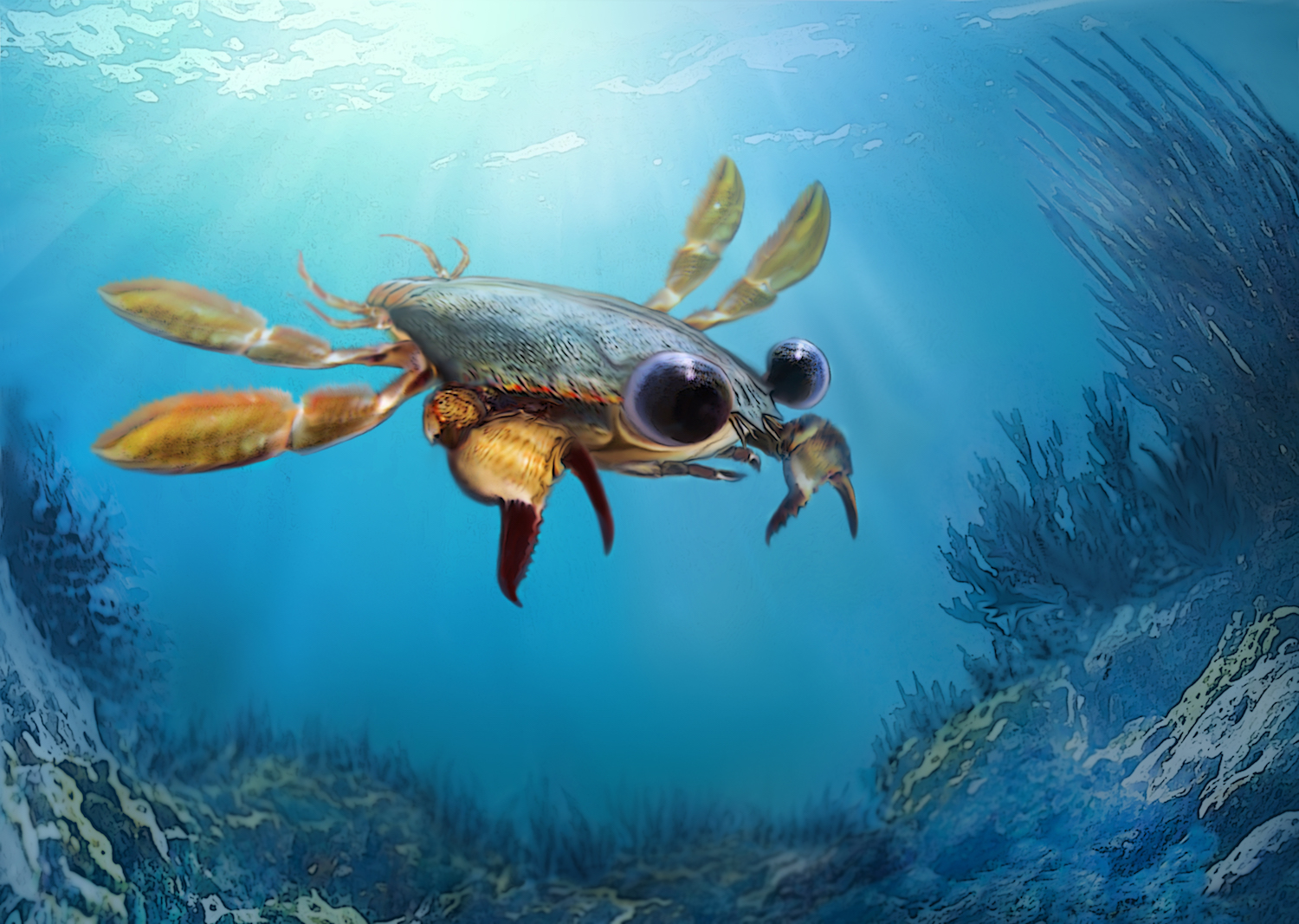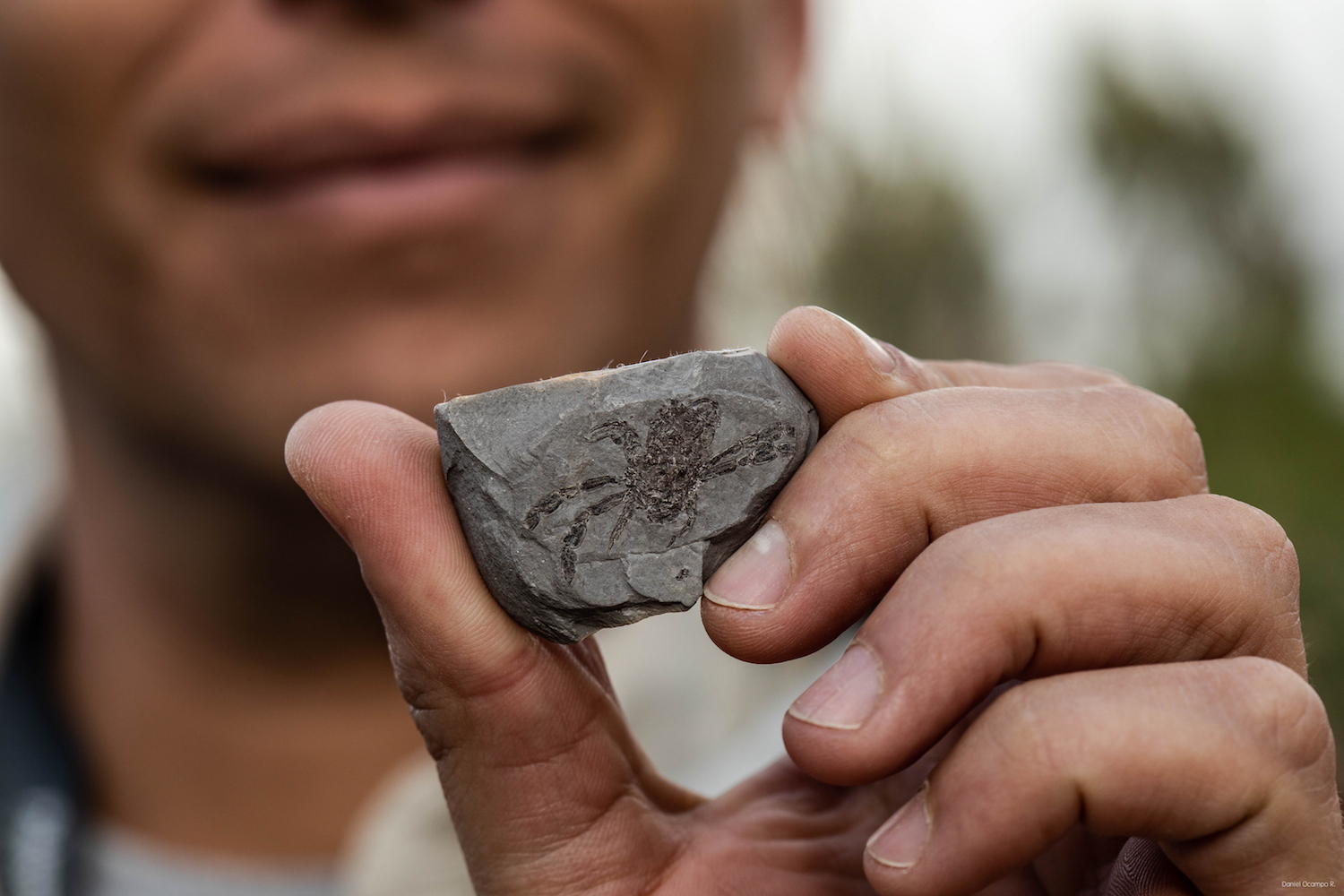'Beautiful Nightmare' Crab Sported Lobster Shell, Shrimp Mouth and Soccer Ball Eyes
An ancient crab that lived during the dinosaur age was so strange, paleontologists are calling it the platypus of the crab world.
This newly discovered critter — named Callichimaera perplexa, which means "perplexing beautiful chimera" — had a hodgepodge of body parts. That name references the mythical chimera from Greek mythology, which had a lion's head, a goat's body and a snake's tail.
But unlike the mythological version, this bizarre chimera actually existed: It had the mouth of a shrimp, the claws of a modern frog crab, the shell of a lobster and the paddle-like appendages of a sea scorpion, the researchers found. Its eyes were so giant that it would be like a human with soccer ball-size peepers, said study lead researcher Javier Luque, a postdoctoral fellow in paleontology at Yale University and the University of Alberta in Canada. [Photos: Ancient Crab is the Strangest You've Ever Seen]
"[It had] huge, enormous eyes," Luque told Live Science. "They're like Little Red Riding Hood [when she asks the wolf], 'What big eyes you have. What do you use them for?'"
In this case, C. perplexa likely used its large eyes, not to mention its powerful claws, to hunt tiny crustaceans, such as comma shrimp. "We don't think they were filter feeders," Luque said. "We think they were actually active predators."

Unexpected discovery
Luque made the first discovery of C. perplexa remains in 2005 while hunting for fossils as an undergraduate student in Pesca, a town high in the Colombian Andes Mountains. "They were leggy-looking things," he said. "It looked like a crab, but I thought it was more like a spider."
After much study, he found that the critter was a weird, quarter-size crab that lived about 95 million to 90 million years ago, during the Cretaceous period. Within a few years, he heard tales of similar fossil crabs discovered in Wyoming and Morocco. Soon, he had more than 70 specimens of this tiny crustacean, including babies, adults, males and females.
Sign up for the Live Science daily newsletter now
Get the world’s most fascinating discoveries delivered straight to your inbox.
Given that these crabs were found in such different places and environments, they were likely highly adaptable, Luque said. C. perplexa is so extraordinary, it forms an entirely new branch of the evolutionary tree for crabs, he added.

In addition to looking like a mix of different animals, this swimming crab also looked like a combination of baby and adult parts. For instance, grown individuals had large, socketless compound eyes; bent claws; leg-like mouth parts; an exposed tail; and a long body — all of which are seen in crab larvae.
In essence, the discovery of C. perplexa shows that "true crabs" lost and reevolved their body plans many times throughout history, Luque said.
"I call it my beautiful nightmare because it was so beautiful and frustrating" to figure out, Luque said.
The study was published online today (April 24) in the journal Science Advances.
- See 15 Crazy Animal Eyes — Rectangular Pupils to Wild Colors
- Image Gallery: Tiny Crustaceans Found in Fossil Reef
- Photos: Unique Life Found at East Coast Gas Seep
Originally published on Live Science.

Laura is the archaeology and Life's Little Mysteries editor at Live Science. She also reports on general science, including paleontology. Her work has appeared in The New York Times, Scholastic, Popular Science and Spectrum, a site on autism research. She has won multiple awards from the Society of Professional Journalists and the Washington Newspaper Publishers Association for her reporting at a weekly newspaper near Seattle. Laura holds a bachelor's degree in English literature and psychology from Washington University in St. Louis and a master's degree in science writing from NYU.










